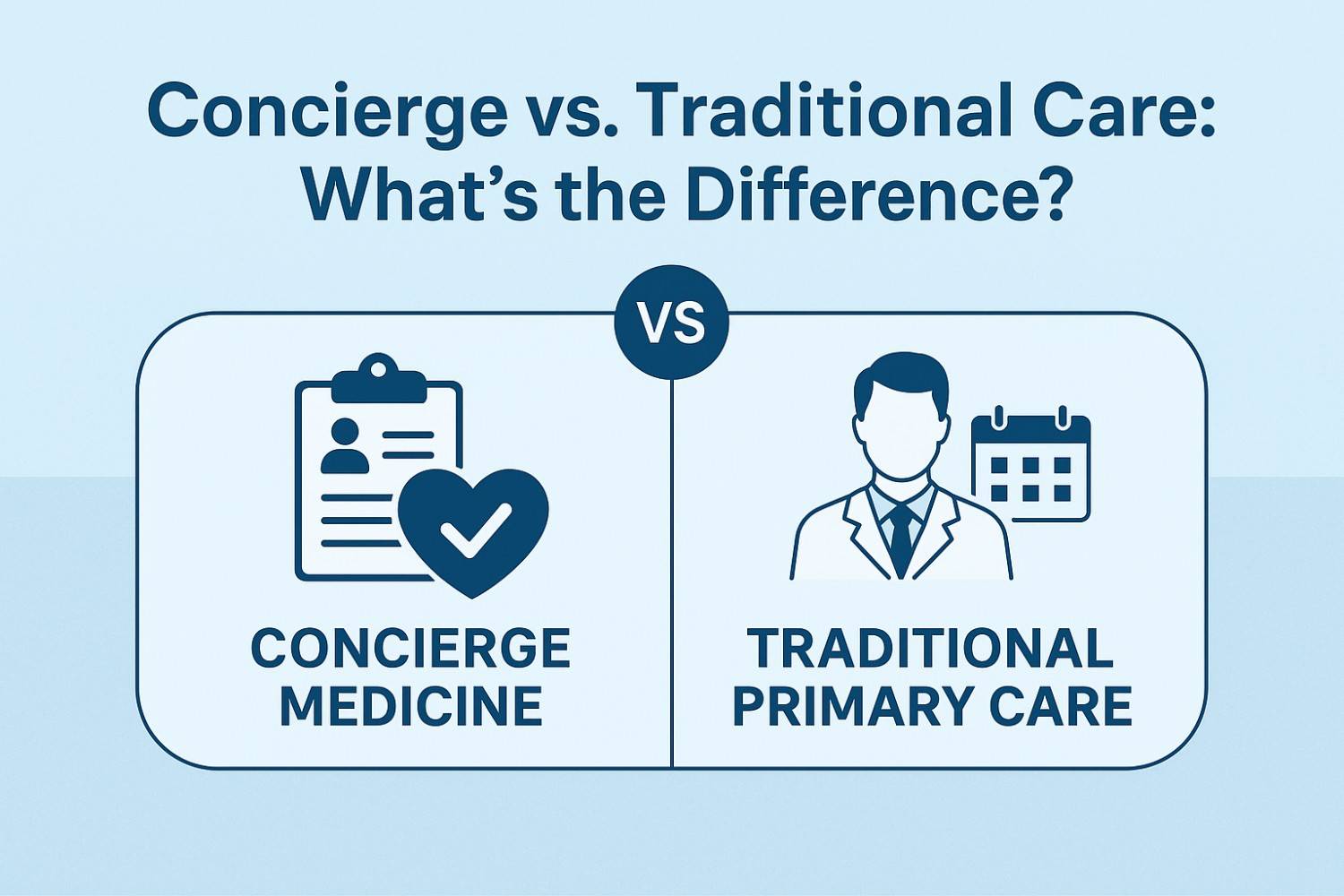Choosing the right primary care doctor is a crucial health decision. However, the traditional healthcare model often leads to long wait times and brief appointments, prompting many to seek alternatives like concierge medicine.
Concierge Medicine vs. Traditional Primary Care
At its core, traditional primary care is the system most people are familiar with. Doctors typically manage thousands of patients and bill insurance companies for each service provided. This high-volume model often results in packed waiting rooms and rushed appointments.
Concierge medicine, also known as retainer or boutique medicine, offers a different approach. Patients pay a recurring fee—usually monthly or annually—for enhanced access and more personalized attention from their doctor. This allows physicians to maintain a much smaller patient panel, fostering a deeper, more proactive doctor-patient relationship.

Key Differences Explored
While both models aim to keep you healthy, their structures and what they offer can vary significantly. Let’s look at the main distinctions.
Access to Care
One of the most noticeable differences is how easily you can connect with your doctor.
- Traditional Primary Care: Scheduling an appointment can sometimes mean waiting weeks, or even months, for a routine check-up. When you do get to the clinic, it’s common to spend a significant amount of time in the waiting room. Communication outside of appointments is often limited to leaving messages with the front desk.
- Concierge Medicine: Because doctors have fewer patients, they can offer same-day or next-day appointments. Wait times are minimal, if there are any at all. Concierge practices also provide direct communication channels, such as a personal cell number or email, allowing you to reach your physician after hours for urgent matters. This level of access provides peace of mind, knowing your doctor is available when you need them.
Doctor-Patient Relationship
The nature of your relationship with your doctor is another area where these models diverge.
- Traditional Primary Care: With appointments often lasting just 15 minutes, there’s little time for in-depth conversation. Doctors must work quickly to diagnose immediate issues, leaving less opportunity to discuss preventative health or underlying lifestyle factors. Over time, it can be challenging to build a strong, personal connection.
- Concierge Medicine: Longer appointment times—often 30 minutes or more—are standard. This allows for comprehensive discussions about your health goals, concerns, and overall well-being. Doctors get to know you as a person, not just a set of symptoms. This fosters a collaborative partnership focused on proactive and preventative care, helping you manage your health more effectively in the long run.
Cost and Fees
The financial structures of concierge and traditional care are fundamentally different.
- Traditional Primary Care: The cost is primarily managed through health insurance. You pay your monthly premium, and your insurance covers a portion of the visit, leaving you with a copay or deductible. While this model can be more affordable upfront, unexpected costs can arise, and navigating insurance claims can be complex.
- Concierge Medicine: Patients pay a retainer fee that covers enhanced access and a range of services not typically included in traditional care. This fee can range from a few hundred to several thousand dollars per year. It’s important to note that this fee does not replace health insurance. You will still need insurance to cover specialist visits, hospitalizations, and major procedures. Some concierge practices may also bill your insurance for office visits in addition to the retainer fee.
Services Offered
The scope of services provided also varies between the two models.
- Traditional Primary Care: Services are focused on diagnosing and treating acute illnesses and managing chronic conditions. Preventative care is included, but time constraints can limit how deeply these topics are explored.
- Concierge Medicine: There is a strong emphasis on wellness and preventative health. Concierge doctors often provide comprehensive annual physicals, personalized wellness plans, nutritional counseling, and fitness guidance. This proactive approach aims to prevent health issues before they start. Some practices even offer coordination with specialists and, in certain situations, may work with a medical flight coordinator for complex travel needs.
Benefits of Each Model

Why Choose Concierge Medicine?
For those who prioritize convenience and a close relationship with their doctor, concierge medicine offers several advantages:
- Improved Health Outcomes: The focus on preventative care and wellness can lead to better long-term health.
- Greater Convenience: Same-day appointments and direct physician access save time and reduce stress.
- Enhanced Patient Satisfaction: Patients often feel more heard and cared for due to longer, more personal appointments.
Why Choose Traditional Primary Care?
The traditional model remains a practical choice for many, primarily due to its financial accessibility:
- Lower Out-of-Pocket Costs: Without a retainer fee, the upfront cost is generally lower.
- Broad Insurance Acceptance: Most traditional primary care physicians are in-network with a wide range of insurance plans.
Conclusion
Now that we have explored the differences between traditional and concierge medicine, it is clear that both models have their pros and cons. Ultimately, the decision of which type of primary care to choose comes down to personal preference and individual needs.















